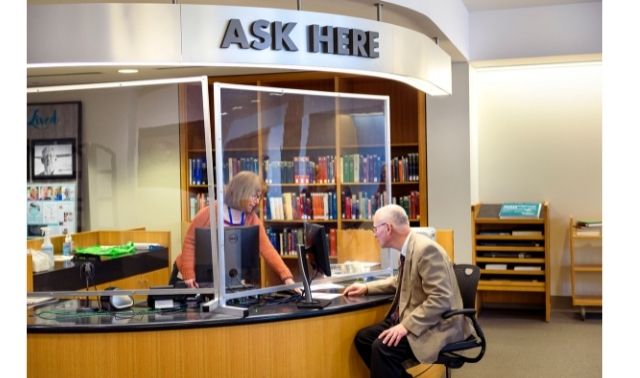by Lisa Cooke | Oct 22, 2015 | 01 What's New, Evernote, FamilySearch, Listeners & Readers, Source Citation
Here’s how can you add family history documents you’ve grabbed with the Evernote web clipper to your tree on FamilySearch!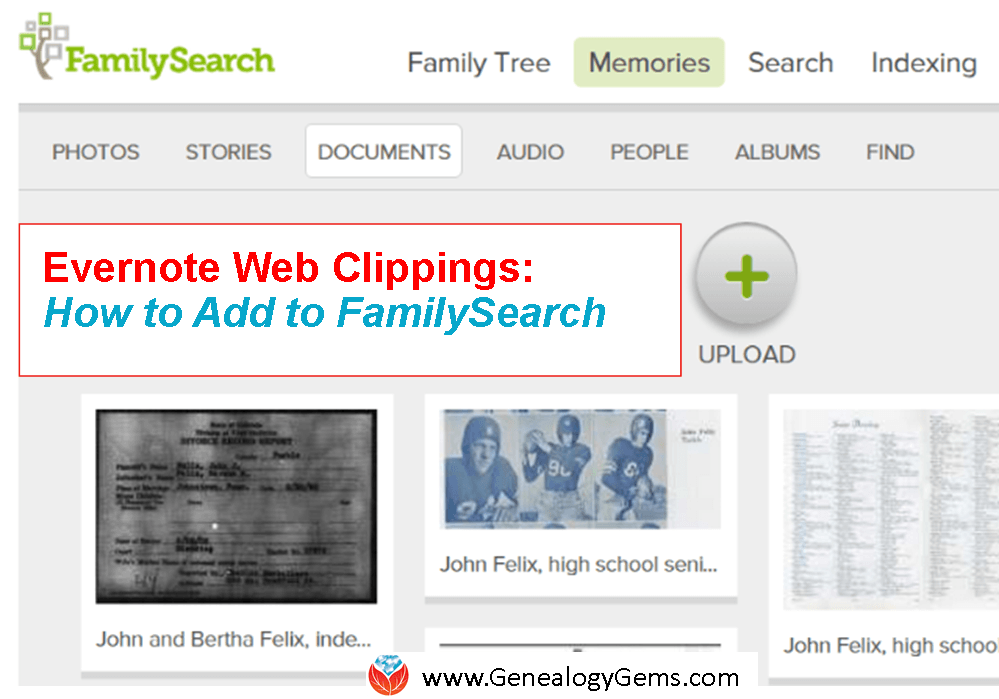
Recently Zooey wrote in with this question: “I’ve clipped numerous things for my ancestors [with the Evernote web clipper] that I want to put in FamilySearch. How do I do it under Documents?”
Good for Zooey for having her genealogy sources organized in Evernote–and for wanting to cite her sources on her FamilySearch family tree. Here’s how to do it:
FamilySearch Documents support the following file types: .pdf, .jpg, .tif, .bmp, and .png. Since it doesn’t currently have an “import from Evernote” feature, you’ll need to export the web clippings from Evernote and then upload them to FamilySearch.
Earlier this year I wrote an article on our blog entitled “Here’s a Cool Way to Export a Web Clipping from Evernote.” The article will walk you through exporting your Evernote web clippings as pdf files, which FamilySearch Documents can then accept as uploads.
More Evernote for Genealogy Tips on the Genealogy Gems Website:
You can find all our past articles on using Evernote for genealogy (including the one I mentioned) at the home page of our website. On the left, just under the main red menu, you will see a drop down menu called “Select Content by Topic.” Click the down arrow and select “Evernote” from the list. This will display all our past Evernote articles on your screen starting with the most recent. Or get started with these great how-tos:
How to Use Evernote for Genealogy: The Ultimate Education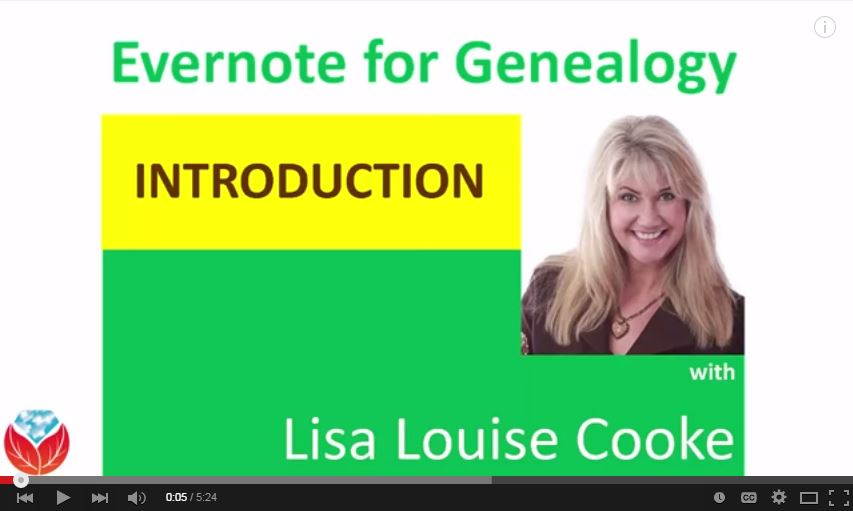
Evernote for Genealogy: What It Is, and Why You Would Use It (FREE VIDEO!)
How to Use Evernote for Genealogy and Family History: Handwriting, OCR, Video and Upload Answers (FREE VIDEO!)
 Thank you for sharing this post with others. We would all love our online trees to be better sourced–and for others’ trees to be better sourced, too.
Thank you for sharing this post with others. We would all love our online trees to be better sourced–and for others’ trees to be better sourced, too.
by Lisa Cooke | Aug 17, 2011 |
Frequently Asked Questions About the Free Podcast What’s the Genealogy Gems Podcast about?My goal is to provide folks who are researching their family history with nuggets of inspiration and innovation to help them get the most of out their research time. Episodes...
by Lisa Cooke | Feb 1, 2015 | 01 What's New, Apps, FamilySearch, iPad, Mobile, Photographs, Technology, Trees
Do you ever wonder whether you’re missing something when you browse iTunes or Google Play for genealogy apps? Well, FamilySearch has created a 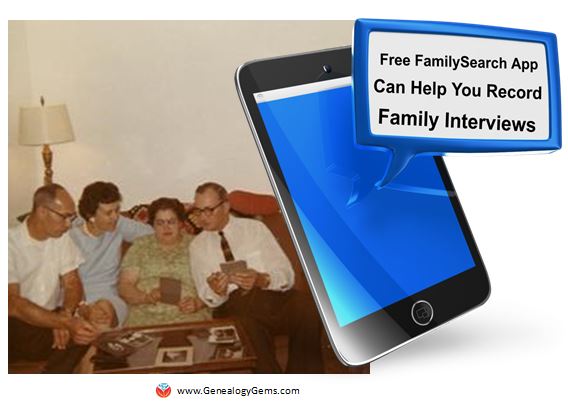 space JUST for family history apps: The FamilySearch App Gallery.
space JUST for family history apps: The FamilySearch App Gallery.
According to a FamilySearch press release, the gallery helps people “more easily find the right application from FamilySearch’s many partner applications, or services, to enhance their family history efforts. With just a few clicks, patrons can now begin to search partner apps to find those that meet their specific need.”
For example, you can search the App Gallery by:
- what the app does (family tree software, find ancestor, photos and stories, charts and tree views and tree analyzing);
- platform (web, windows, Mac OS, Android, iPhone/iPad and Windows phone);
- price (free for everyone, one-time payment, subscription, or free trial);
- language (English, French, German, Italian, Spanish, Portuguese and more);
- and FamilySearch compatibility (reads from FS, updates into FS or FS account not required).
Remember, the nature of apps is usually very specific. The BillionGraves for Android (or iOS) app, for example, lets you image and index gravestones for the BillionGraves website. But you may not have ever come across some of these apps before–and may find them very useful for your current or future research. For example, Historic Journals lets you run your own indexing project with your own group. You can tag, index, share or archive historic documents in a public or private environment.
 I’m pleased to report that the Genealogy Gems Podcast app for iOS and Android are in the FamilySearch App Gallery! In case you don’t already know about the Genealogy Gems Podcast app, it brings the free Genealogy Gems Podcast to your smart phone or tablet along with exclusive bonus material. And in January the app celebrated it’s 5th anniversary! In addition to getting access to the show, you’ll also receive access to special features like PDFs with tips and ideas from the show; Genealogy Gems wallpaper; bonus audio and video content; the ability to follow the show on Twitter; and call-in audio comment feature (iPhone only). (Not all features available for all episodes.)
I’m pleased to report that the Genealogy Gems Podcast app for iOS and Android are in the FamilySearch App Gallery! In case you don’t already know about the Genealogy Gems Podcast app, it brings the free Genealogy Gems Podcast to your smart phone or tablet along with exclusive bonus material. And in January the app celebrated it’s 5th anniversary! In addition to getting access to the show, you’ll also receive access to special features like PDFs with tips and ideas from the show; Genealogy Gems wallpaper; bonus audio and video content; the ability to follow the show on Twitter; and call-in audio comment feature (iPhone only). (Not all features available for all episodes.)
 While the FamilySearch App Gallery is a great resource, it isn’t a comprehensive home for ALL family history related apps. And a lot of genealogy-friendly apps aren’t categorized as such in Google Play or the App Store. Learn more about TONS of apps to further YOUR family history in Lisa’s book Turn Your iPad into a Genealogy Powerhouse. This book introduces you to the tablet/iPad way of “thinking” (it’s different than how you use a computer). It gives you an in-depth look at over 65 genealogy-friendly apps, 32 fabulous tips and tricks and links to online videos where you can watch things for yourself. Got a tablet? No problem–apps available in Google Play are included, and the tips include clues about features to look for in your brand of tablet.
While the FamilySearch App Gallery is a great resource, it isn’t a comprehensive home for ALL family history related apps. And a lot of genealogy-friendly apps aren’t categorized as such in Google Play or the App Store. Learn more about TONS of apps to further YOUR family history in Lisa’s book Turn Your iPad into a Genealogy Powerhouse. This book introduces you to the tablet/iPad way of “thinking” (it’s different than how you use a computer). It gives you an in-depth look at over 65 genealogy-friendly apps, 32 fabulous tips and tricks and links to online videos where you can watch things for yourself. Got a tablet? No problem–apps available in Google Play are included, and the tips include clues about features to look for in your brand of tablet.
by Lisa Cooke | Jun 8, 2016 | Genealogy Gems Podcast
Genealogy Gems Podcast
Episode #192
with Lisa Louise Cooke
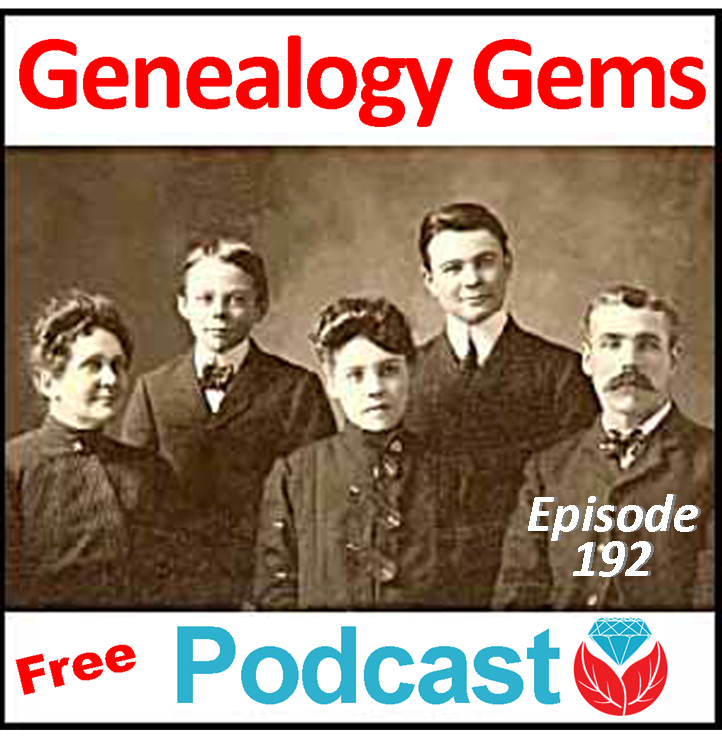 Highlights from this episode:
Highlights from this episode:
- How to use Animoto, my favorite new tech tool for creating professional-looking slide shows and videos
- New Genealogy Gems team member Amie Tennant shares insights as she prepares for professional certification
- A listener shares a favorite genealogy database for finding recent relatives
- A listener uses DNA to connect adoptive and biological relatives?who were closer than she thought
- A segment from the Genealogy Gems Book Club interview with author Helen Simonson on The Summer Before the War
- News from Dropbox and a new initiative to capture the family histories of remote, indigenous populations
NEWS: Dropbox Improvement
New on Dropbox: Now when you share Dropbox content with someone, shared links will stay active even if you move or rename the file or folder.
Dropbox file-sharing tip: “If you ever want to unshare something you’ve already sent out (like to remove access to a sensitive document), it’s easy to disable an active link.” Just sign in to dropbox.com. “Click the link icon next to the file or folder, and click ‘remove link’ in the top right corner of the box that appears. You can also remove the link by visiting dropbox.com/links and clicking ‘x’ next to the file or folder.”
How to share folders on Dropbox
NEWS: MyHeritage and Tribal Quest
NEWS: New Premium Video
 Getting Started in Genetic Genealogy: a new video available to Genealogy Gems Premium website members by Your DNA Guide Diahan Southard
Getting Started in Genetic Genealogy: a new video available to Genealogy Gems Premium website members by Your DNA Guide Diahan Southard
Genealogy Gems Premium website membership: Click here to learn more
Click here to watch a free video preview
MAILBOX: Russ Recommends the U.S. Public Records Index
 Russ blogs at https://worthy2be.wordpress.com/
Russ blogs at https://worthy2be.wordpress.com/
Genealogy Gems Podcast episode 181: What to use while waiting for the 1950 census
Russ recommends the “U.S., Public Record Index, 1950-1993, Volume 1 and 2.”
“Volume 1 is far more interesting with more data. A search will return a Name AND Birth date, along with more than one ADDRESS, Zip Code and sometimes phone numbers.”
Ancestry’s description of its online database for Volume 1 says original data comes from public records spanning all 50 states, such as voter registration lists, public record filings, historical residential records and other household database listings.
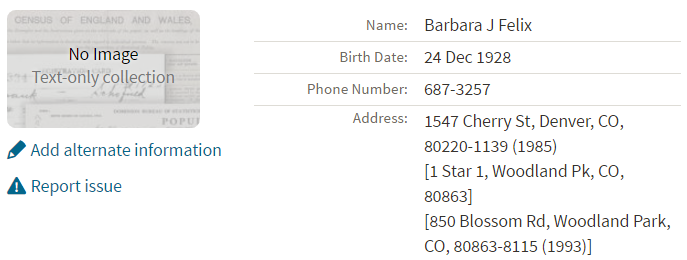
Thoughts about using the U.S. Public Records Index (some of these points come from the FamilySearch wiki):
Not everyone who lived in the U.S. appears in the index, and you’re more likely to find birth information for those born between 1900 and 1990. What you’ll find is primarily where someone lived, and often when they lived there.
It’s rarely possible to positively identify a relative in this index, since there’s limited information and it spans the entire country for up to a half century, and you can’t follow up on the record it comes from because the index doesn’t say where individual records come from. As Russ says, this is a great resource to use in combination with other records. It’s a similar concept to the way you might consult uncited family trees: great hints to go on and follow up with further research into verifiable sources.
When you find more recent listings, you can sometimes find telephone numbers for living distant relatives. The Family History Made Easy podcast has a 2-episode series (episodes 14 and 15) about cold-calling techniques for reaching out to distant relatives you don’t know.
MAILBOX: Katie on Cold-calling and Adoption and DNA
Katie blogs her family history adventures at McKinnon Ancestry.
Click here to read a blog post with her story and see more pictures that go with it.
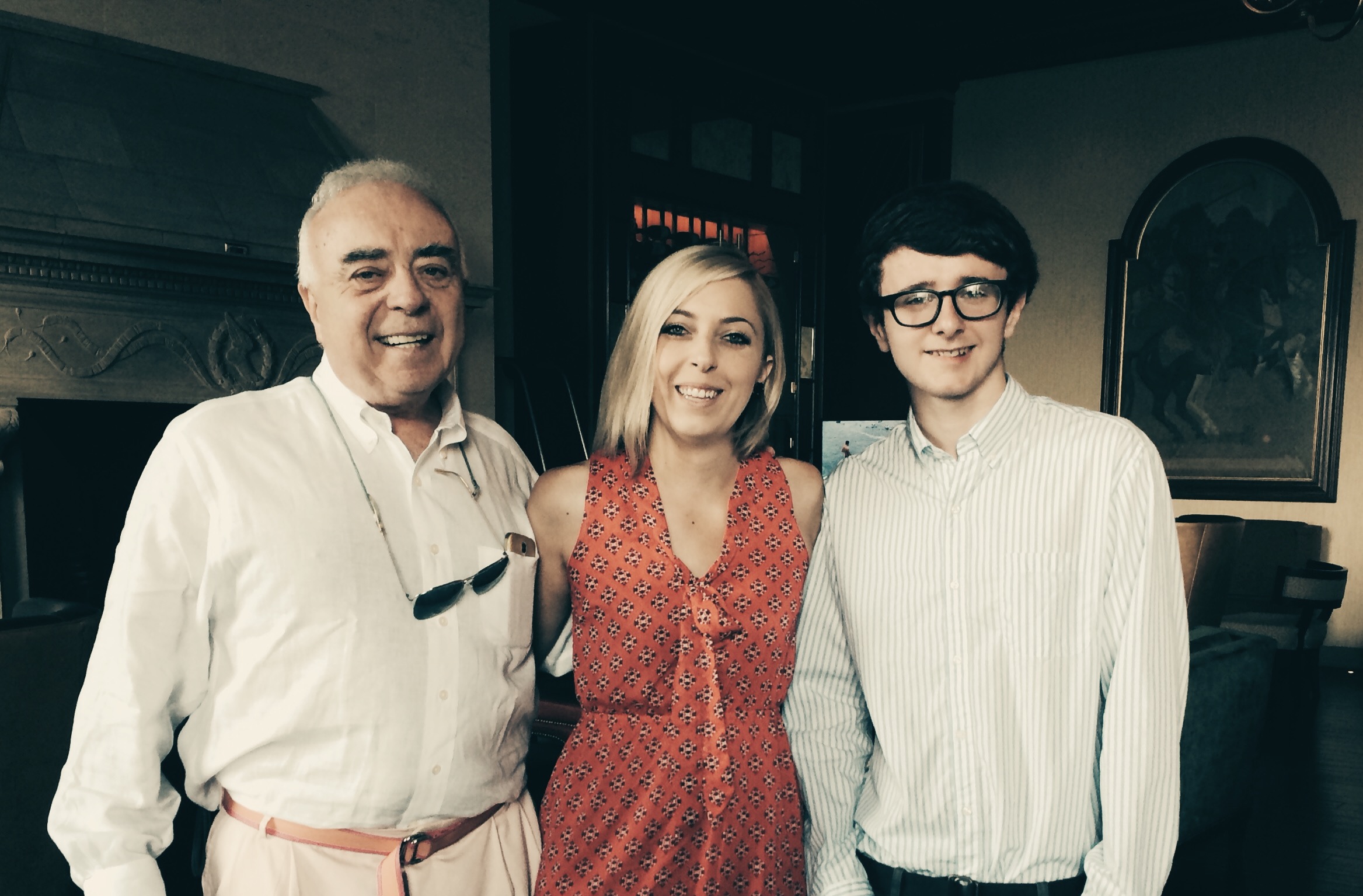
INTERVIEW: Amie Tennant
 Amie Tennant is the newest member of the Genealogy Gems team. She contributes to the blog at www.genealogygems.com. She is also preparing to become a certified genealogist, which is a professional credential offered by the Board for Certification of Genealogists (BCG).
Amie Tennant is the newest member of the Genealogy Gems team. She contributes to the blog at www.genealogygems.com. She is also preparing to become a certified genealogist, which is a professional credential offered by the Board for Certification of Genealogists (BCG).
What have you learned in the process of preparing for certification?
“I think the biggest thing I have learned is the meaning of true exhaustive research. We talk a lot about that in our genealogy standards, but essentially, it is looking EVERYWHERE for EVERYTHING that might shed light on your research question.”
Why do you want to become certified?
I want a way to determine how well I am doing. A measuring stick of sorts.
What is the process like?
The process is the same for everyone. Once you have decided to become certified, you apply to the BCG. They send you a packet of information and you are “on the clock.” The clock is up in one year unless you ask for an extension. The portfolio you create consists of:
- Signing the Code of Ethics
- Listing your development activities (like formal coursework or enrichment activities);
- Transcribe, abstract, create a genealogy research question, analyze the data, and then write the research plan for a document that is supplied to you;
- Do those same 5 things for a document of your choosing;
- A research report prepared for another person.
- A case study with conflicting, indirect or negative evidence;
- A kinship determination project (a narrative genealogy that covers at least 3 generations)
- There is a lot of great free content on the BCG website: articles, examples, and skill-building activities.
GEM: How to Create Family History Videos Quickly and Easily
Visit our page on how to create family history videos which includes video tutorials and inspirational examples.
 BOOK CLUB: Interview excerpt with Helen Simonson,
BOOK CLUB: Interview excerpt with Helen Simonson,
author of
The Summer Before the War
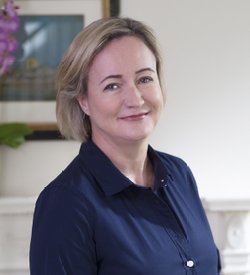
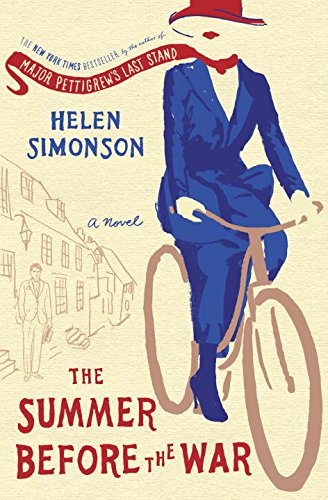
Get the hardcover
Get the Kindle ebook
Beatrice Nash is a bright, cosmopolitan young lady who has grown up traveling the world with her father. Now he’s gone, and she’s landed in the small village of East Sussex, England, where the locals aren’t entirely thrilled about engaging her as a female Latin instructor for their schoolchildren. She spends a summer fighting for her job, meeting a local cast of engaging eccentric characters (both gentry and gypsy) and trying not to fall for handsome Hugh. Then the Great War breaks out.
This novel follows Helen’s popular debut novel, Major Pettigrew’s Last Stand, which became a New York Times bestseller and has been translated into 21 languages. Genealogy Gems Premium website members can join us in June to hear our exclusive and fun interview with Helen Simonson.
GENEALOGY GEMS PODCAST PRODUCTION CREDITS:
Lisa Louise Cooke, Host and Producer
Sunny Morton, Contributing Editor
Vienna Thomas, Audio Editor
Additional content by Lacey Cooke, Amie Tennant
Disclosure: This article contains affiliate links and Genealogy Gems will be compensated if you make a purchase after clicking on these links (at no additional cost to you). Thank you for supporting Genealogy Gems!
by Lisa Cooke | Oct 17, 2022 | 01 What's New, Colonial (US.) Early American, Genealogy Gems Podcast
Episode Show Notes
In this episode, we’re focusing on early Virginia genealogy.
In our first segment, I’ve invited a professional genealogist to join us to help pave the way for tracing our ancestors back to Virginia just prior to the Revolutionary War. Jeri Satterwhite-Dearing specializes in early Virginia research in her work as a professional genealogist with
Legacy Tree Genealogists. In this podcast episode she explains some of the biggest challenges you’ll face when researching early Virginian ancestors, the records you should be looking for, and some of the best resources.
In the second segment, I’ll cover a list of the best websites for Virginia Genealogy.
MyHeritage DNA
Get your MyHeritage DNA kit here


Visit Fort Wayne
Fort Wayne, Indiana is the home of the second largest free genealogy library in the country. Make your plans to visit today. Learn more at https://www.visitfortwayne.com
7 Best Websites for Virginia Genealogy
Formerly known as Virginia Heritage, this website is a “consolidated database of finding aids that provides information about the vast array of manuscripts and archival materials housed in Virginia and West Virginia.”
2. Cyndi’s List: Virginia (state)
A comprehensive and growing list of links to genealogy resources for Virginia research.
A guide to Virginia ancestry, family history, and genealogy (birth records, marriage records, death records, census records, and military records.)
Links to Virginia family history & genealogy resources such as census, birth, marriage, death records & more.
Part of the U.S. GenWeb Project.
From the website: “Part of the online presence of the Library of Virginia, the state archives and reference library. The Library maintains vast and varied collections of print materials, manuscripts, archival records, newspapers, photographs and ephemera, maps and atlases, rare books, and fine art that tell the history of the commonwealth and its people.”
From the website: “The Virtual Jamestown Archive is a digital research, teaching and learning project that explores the legacies of the Jamestown settlement and “the Virginia experiment.” As a work in progress, Virtual Jamestown aims to shape the national dialogue on the occasion of the four hundred-year anniversary observance in 2007 of the founding of the Jamestown colony.”
Become a Genealogy Gems Premium Member
Premium Members have exclusive access to:
- Video classes and downloadable handouts
- The Genealogy Gems Premium Podcast
- Downloadable ad-free show notes PDF handouts
Become a member here.

Genealogy Gems Podcast App
Don’t miss the Bonus audio for this episode. In the app, tap the gift box icon just under the media player. Get the app.
Get the Free Genealogy Gems Newsletter
The Genealogy Gems email newsletter is the best way to stay informed about what’s available with your Premium eLearning Membership. Sign up today.
Follow Lisa and Genealogy Gems on Social Media:


 Thank you for sharing this post with others. We would all love our online trees to be better sourced–and for others’ trees to be better sourced, too.
Thank you for sharing this post with others. We would all love our online trees to be better sourced–and for others’ trees to be better sourced, too.
 space JUST for family history apps:
space JUST for family history apps:  I’m pleased to report that the Genealogy Gems Podcast app for
I’m pleased to report that the Genealogy Gems Podcast app for  While the FamilySearch App Gallery is a great resource, it isn’t a comprehensive home for ALL family history related apps. And a lot of genealogy-friendly apps aren’t categorized as such in Google Play or the App Store. Learn more about TONS of apps to further YOUR family history in Lisa’s book
While the FamilySearch App Gallery is a great resource, it isn’t a comprehensive home for ALL family history related apps. And a lot of genealogy-friendly apps aren’t categorized as such in Google Play or the App Store. Learn more about TONS of apps to further YOUR family history in Lisa’s book  Highlights from this episode:
Highlights from this episode: Getting Started in Genetic Genealogy
Getting Started in Genetic Genealogy Russ blogs at
Russ blogs at 

 Amie Tennant is the newest member of the Genealogy Gems team. She contributes to the blog at
Amie Tennant is the newest member of the Genealogy Gems team. She contributes to the blog at  BOOK CLUB: Interview excerpt with Helen Simonson,
BOOK CLUB: Interview excerpt with Helen Simonson,



